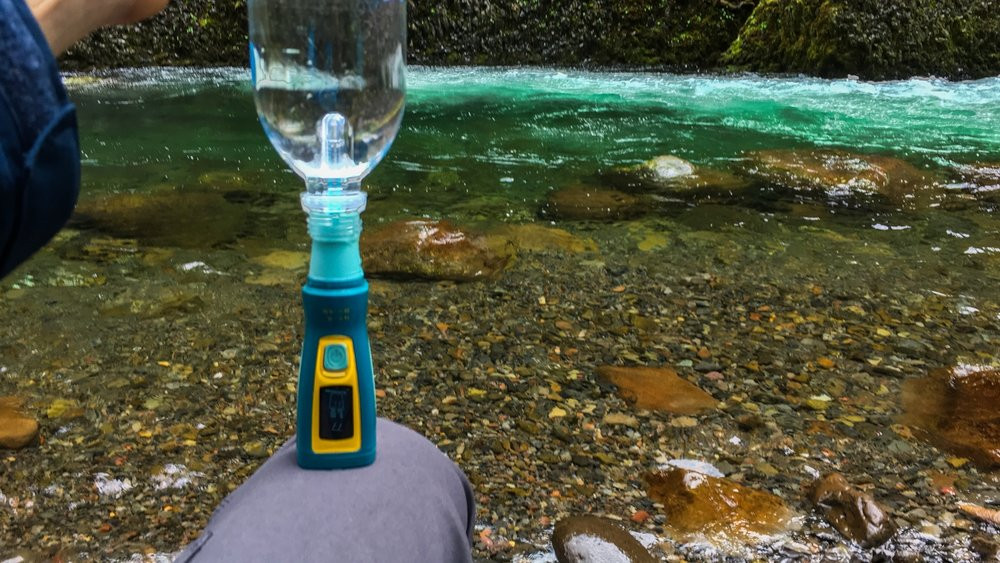- Freeland Hiking Co.
The ultimate way to sanitise water in the bush
Minimising the risk of illness in the wild is extremely important. One of the easiest ways to turn an adventure into a nightmare is to get sick from drinking contaminated water on the track.
Of course, you can mitigate some risk by choosing your water source wisely; generally, running water is better than stagnant water; upstream is better than downstream, and it’s important to consider whether any livestock or wildlife pass through the area as their fecal matter can contaminate the water.
But sometimes, your only option might be to sanitise the water you collect. So what is the best method?
To purify water, there are 4 main options; boiling, water purification tablets, water filters and UV light devices. I’ve unpacked the pro’s and con’s below, to help you make the best decision next time you’re heading out into the wild.
1. Roll boiling for 3 minutes
Roll-boiling is the process of heating up water to the stage where large bubbles are 'rolling' to the surface and breaking. In general, this method is cheap and effective, but it does have limitations, especially if the water is particularly dirty.

Pros
Very effective in killing germs and bacteria
Does not require additional equipment
Does not require a wait-time, like some water filters or purification tablets
Cons
Does not remove all pollutants, odours and silt/sediment
Can be time-consuming to boil large amounts of water, using lots of fuel
Water is hot, needing time to cool before it can be safely drunk
2. Water purification tablets (e.g. Aquatabs)
Commonly used when travelling, these tabs are also great to keep in the first aid kit when hiking, for any quick purification needs. Lightweight and simple to use, they can be effective in areas such as the Blue Mountains, where the water runs clear and clean, but has residual contamination from by-gone eras.

Pros
Easy to find and lightweight to carry
Requires no special equipment or fuel sources
Good for small, individual containers such as drink bottle and bladders
Cons
Does not remove sediments or silt
Requires time to purify, commonly 30 minutes
May leave a chemical, chlorine taste behind
May lose effectiveness over time if tablets are stored for too long
3. Water filters/Straws
An amazing invention and surprisingly cheap for solo hikers, straws and other water filters might just be the ticket. They provide the fastest access to fresh, clean water on the list, but can be fiddly when it comes to maintenance and cleaning.

Pros
Removes most sediments and silt
Can purify exactly the right amount of water needed (no wastage)
Treatment is easy and water is instantly drinkable
Cons
Requires additional equipment
Filters require regular maintenance and cleaning to stay effective
Some can be a manual process, pumping or squeezing which takes time and effort
3. UV light devices (e.g. Steri-pen)
And finally, the UV light-device. The king of kings, this device kills up to 99.9% of bacteria in the water, leaving only pure drinkable water behind. Expensive to begin with, the UV light-device will quickly pay back dividends if you're out in the bush enough to get maximum use.

Pros
A very high rate of accuracy, often sanitising water to 99.5%
Lightweight to carry and easy to use
One pen device can last a lifetime, with over 8000L per bulb
Quick to sanitise, often taking less than 1 minute to do 1 L
Cons
Expensive to buy
Requires battery charge, so it’s necessary to always carry a back-up solution just in case
Does not remove any sediment. Dirty water will need to be strained first
Can be tricky to use in water bladders or water bottles with narrow tops, as the UV light needs to be completely submerged to operate.
What's in my pack?
Actually, a little bit of everything! I have a steri-pen that I use on all my tours and personal trips. But, being battery dependant, I also always carry back-up aqua-tabs to use in emergencies. Then, when preparing meals and a cuppa at camp, I just use the boiling method for simplicity. Thankfully I haven't had to manage murky water yet, but if that day comes then I'll probably look to add a filter of some kind, to remove any silt and sediment.
So really, the filtration system you choose will be a personal choice, based on your hiking location and your access to fresh water, the size of your group and the length of your trip.
But whichever you choose, make sure you follow the instructions 100% to ensure happy bellies and a successful hiking adventure.

